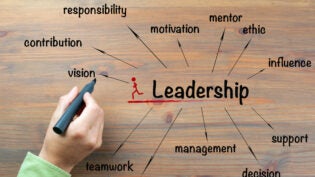7 Action Items Build a Sustainable Innovation Culture
By: Marty Zwilling

Every business founder knows the need for a culture that promotes continuous innovation, an entrepreneurial spirit, and one that creates sustainable value across all functions in the business. Yet most don’t really know how to create that environment, or assess when they have achieved it. They only know in retrospect too late when they don’t have it, and the business is in crisis mode.
This topic was well addressed in the classic book, “The Invisible Advantage: How to Create a Culture of Innovation,” by Soren Kaplan, who lays out the key steps to assess, disrupt, and reshape the existing culture of a company to get more innovation. Kaplan is a leading expert in building innovation cultures, and speaks from his real-world experience with many companies, as well as academic study.
In my own work as an advisor to many entrepreneurs and startups, I see many who are focused on that single big disruptive innovation that will change the world. It’s a good start, but that’s not the continuous flow of smaller innovations required to survive, thrive, and win in today’s rapidly changing world. Thus I recommend Kaplan’s steps, which I will paraphrase here:
- Make your innovation marching orders clear. Frame the way you want to change the world, and make it about the customer. Start with defining and publishing innovation goals at the company level, and then ask for specific objectives from every organization. Ask teams for a breakdown into incremental, sustaining, and disruptive innovations.
- Take time to create a structure for innovation. If you don’t take time early to set the culture, you will get a crisis when you need innovation. It can start by setting aside twenty minutes in a weekly meeting to explore new ideas for making things better, and then following through. Carve out unstructured time for team members to focus on ideas.
- Decide what to measure and create metrics. You only get what you measure. Ideas are the beginning. Make sure your measurements are customer-oriented, as well as focused on internal processes. What you measure must reinforce your goals, values, and best practices around innovation. Promote very specific actions and behaviors.
- Reward with recognition over financial incentives. An annual bonus or award is just not enough to catalyze a culture of innovation. Frequent and informal recognition with peers is the most powerful incentive to innovate and change the culture. Symbols that reinforce your desired intent can make innovation a reality that becomes everyone’s job.
- Practice leadership actions that shape the culture. Little things can have a big impact when it comes to creating a culture of innovation. Avoid comments like “We can’t do anything until we have more data,” or “We tried that before and it failed.” Watch the unintended facial expressions, practices that get rewarded, and how failures are handled.
- Assess your innovation culture regularly. In a large organization, online surveys and questionnaires are helpful. It’s always valuable and symbolic to take the time to speak with real live people, both informally and in executive interviews. Count the innovation success stories published internally, or visibly rewarded in each organization.
- Design your invisible competitive advantage. Your culture of innovation should be largely invisible to competitors, but it better be clear to all your teams. Every company has different strengths and goals, yet each can publish internally their innovation canvas of technology, leadership, people, structure, rewards, and metrics that sets them apart.
The most important step is simply to get started. You can use the toolkit provided by Kaplan, or assemble your leadership team and make sure they understand that a culture of innovation is a strategic imperative. Then create an action plan to implement the required steps, follow-up on assessment, and iterate on a regular basis to sustain that invisible advantage.
Remember that every specific competitive advantage is temporary – every product or service becomes a commodity over time. The only sustainable advantage is a culture that results in continuous reinvention, providing ongoing memorable customer experiences. What has your business done lately to excite your existing customers and keep them loyal?












